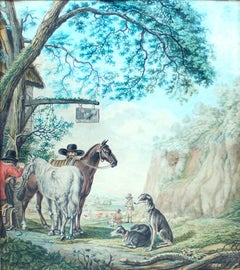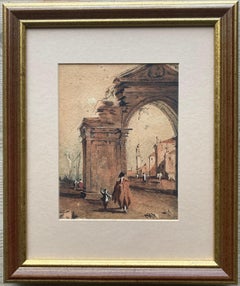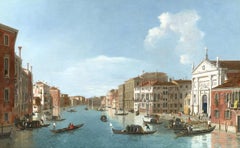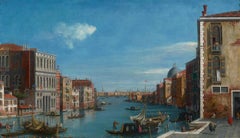Paintings
Early 18th Century Old Masters Paintings
Ink, Watercolor
18th Century Old Masters Paintings
Watercolor, Ink, Archival Paper
19th Century Old Masters Paintings
Paper, Ink, Watercolor
16th Century Old Masters Paintings
Ink, Gouache, Pen
Early 17th Century Old Masters Paintings
Watercolor, Ink
18th Century Old Masters Paintings
Watercolor, Ink, Archival Paper
1670s Old Masters Paintings
Canvas, Oil
15th Century and Earlier Old Masters Paintings
Tempera, Panel
Mid-19th Century Old Masters Paintings
Paper, Watercolor
18th Century Old Masters Paintings
Watercolor, Ink, Archival Paper
18th Century Old Masters Paintings
Ink, Archival Paper, Watercolor
18th Century Old Masters Paintings
Watercolor, Ink, Archival Paper
18th Century Old Masters Paintings
Watercolor, Ink, Archival Paper
18th Century Academic Paintings
Canvas, Oil
18th Century Other Art Style Paintings
Canvas, Oil
18th Century Academic Paintings
Paper, Gouache
18th Century Paintings
Gouache
Shop Abstract, Landscape, Figurative and Still-Life Paintings
Painting is an art form that has spanned innumerable cultures, with artists using the medium to tell stories, explore and communicate ideas and express themselves. To bring abstract, landscape and still-life paintings into your home is to celebrate and share in the long tradition of this discipline.
When we look at paintings, particularly those that originated in the past, we learn about history, other cultures and countries of the world. Like every other work of art, paintings — whether they are contemporary creations or works that were made during the 19th century — can often help us clearly see and understand the world around us in a meaningful and interesting way.
Cave walls were the canvases for what were arguably the world’s first landscape paintings, which depict natural scenery through art. Portrait paintings and drawings, which, along with sculpture, were how someone’s appearance was recorded prior to the advent of photography, are at least as old as Ancient Egypt. In the Netherlands, landscapes were a major theme for painters as early as the 1500s. Later, artists in Greece, Rome and elsewhere created vast wall paintings to decorate stately homes, churches and tombs. Today, creating a wall of art is a wonderful way to enhance your space, showcase beautiful pieces and tie an interior design together.
No matter your preference, whether you favor Post-Impressionist paintings, animal paintings, Surrealism, Pop art or another movement or specific period, arranging art on a blank wall allows you to evoke emotions in a room while also showing off your tastes and interests. A symmetrical wall arrangement may comprise a grid of four to six pieces or, for an odd number of works, a horizontal row. Asymmetrical arrangements, which may be small clusters of art or large, salon-style gallery walls, have a more collected and eclectic feel. Download the 1stDibs app, which includes a handy “View on Wall” feature that allows you to see how a particular artwork will look on a particular wall, and read about how to arrange wall art. And if you’re searching for the perfect palette for your interior design project, what better place to turn than to the art world’s masters of color?
On 1stDibs, you’ll find an expansive collection of paintings and other fine art for your home or office. Browse abstract paintings, portrait paintings, paintings by popular artists and more today.
Read More
Art Brings the Drama in These Intriguing 1stDibs 50 Spaces
The world’s top designers explain how they display art to elicit the natural (and supernatural) energy of home interiors.
Welcome (Back) to the Wild, Wonderful World of Walasse Ting
Americans are rediscovering the globe-trotting painter and poet, who was connected to all sorts of art movements across a long and varied career.
In Francks Deceus’s ‘Mumbo Jumbo #5,’ the Black Experience Is . . . Complicated
Despite the obstacles, the piece’s protagonist navigates the chaos without losing his humanity.
With Works Like ‘Yours Truly,’ Arthur Dove Pioneered Abstract Art in America
New York gallery Hirschl & Adler is exhibiting the bold composition by Dove — who’s hailed as the first American abstract painter — at this year’s Winter Show.
Donald Martiny’s Jumbo Brushstrokes Magnify the Undeniable Personality of Paint
How can a few simple gestures — writ extra, extra, extra large — contain so much beauty and drama?
Patrick Hughes’s 3D Painting Takes Us on a Magical Journey through Pop Art History
The illusions — and allusions — never end in this mind-boggling portrayal of an all-star Pop art show on a beach.
Mid-Century Americans Didn’t Know Antonio Petruccelli’s Name, but They Sure Knew His Art
The New York artist created covers for the nation’s most illustrious magazines. Now, the originals are on display as fine art.
Learn Why There Have Been So Many Great Women Painters
Featuring iconic works by more than 300 female artists, a new book makes a more than compelling case for casting off the patriarchal handcuffs that have bound the art historical canon for far too long.



